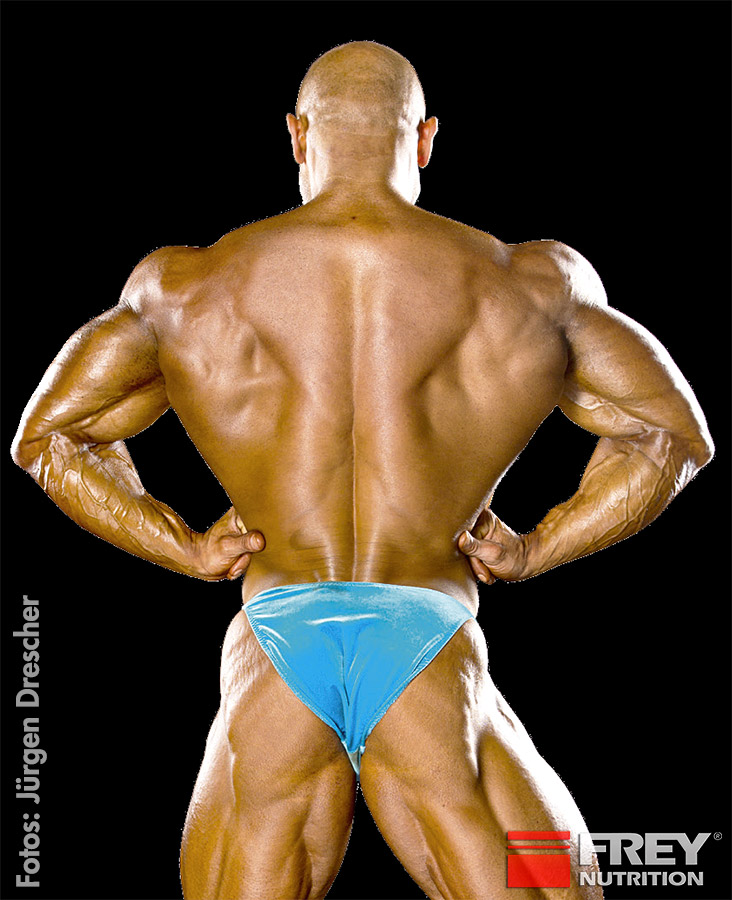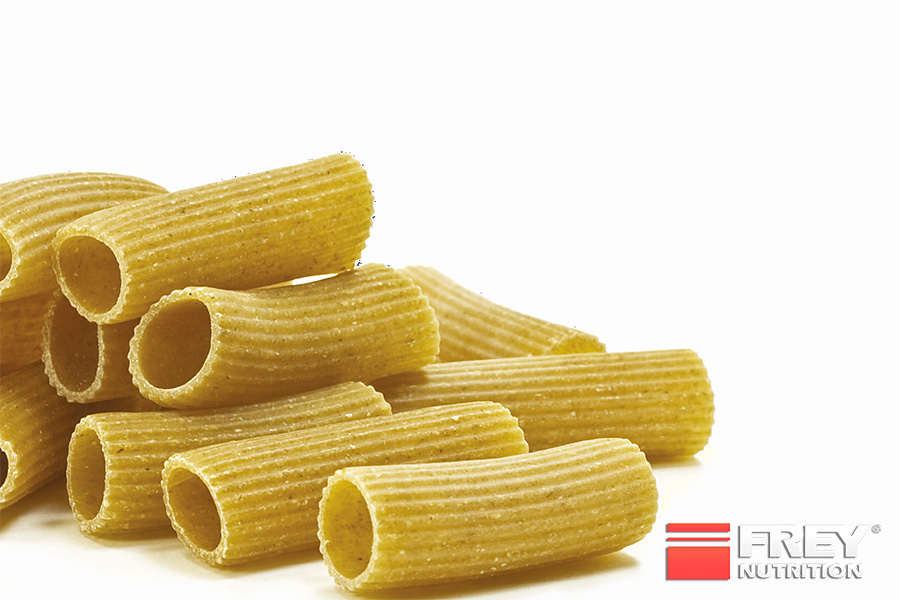COLUMN 85 |
THE LAST DAYS BEFORE THE COMPETITION
WHAT TO CONSIDER BEFORE A COMPETITION!
ANSWER

MANIPULATION OF THE WATER BALANCE
First of all, it is important to know that a distinction is made between extracellular and intracellular fluid. The first is located outside the muscle cell directly under the skin and is bound by sodium or is transported out of the cell using sodium. The second is fluid in the muscle cell. The more intracellular fluid, the more taut the muscles appear. This fluid is bound by potassium and transported into the cell. Sodium and potassium are opposites, and their concentrations influence each other.In a nutshell, the athlete is concerned with maximizing intracellular fluid while minimizing extracellular fluid. The less water there is under the skin and the more there is in the cell, the more defined and voluminous the muscles appear - exactly the two attributes that are important for a successful performance in a bodybuilding competition.
To think about it quite simply and naively, we would only have to reduce the external sodium intake to zero - while simultaneously increasing the potassium intake. According to the previously described connection between sodium and potassium, this approach should get us to our goal. But far from it! Such extreme stress sets in motion control mechanisms that ensure that the deficit of required minerals - in this case, sodium - is compensated for in order to ensure the survival of the organism. If sodium were to be completely avoided, there would be an increased release of the hormone aldosterone, which, among other things, leads to water retention and mimics the function of sodium. Rather, you should do the opposite. Instead of reducing sodium, increase its intake to about three grams per day. At the same time, increase your potassium intake to the same amount of three grams per day. Since foods that contain potassium usually also contain a significant amount of carbohydrates, which is counterproductive, I recommend that you take a potassium supplement. There are several of these available in the pharmacy, mostly in the form of effervescent tablets. Since such a large amount of table salt is difficult to reconcile with normal salting of food, you can also get empty capsules there. So-called 00 capsules are best because one capsule contains exactly one gram of table salt. To absorb one gram of sodium, you need 2.4 grams of table salt. This means you should take seven capsules filled with it per day to ensure you get three grams of sodium. The reason for such a high sodium intake is simple: our organism does not store excess substances and excretes them in the urine. In addition, we get used to the high amount of sodium, which causes even more to be excreted. At the same time, the adrenal cortex stops secreting aldosterone, which means that the body no longer stores extracellular water.To ensure fluid excretion, a significantly increased fluid intake is necessary, which should be around ten to twelve liters per day based on your body weight. Only use still water (without carbonation), as this is the most hydrating option. I prefer regular tap water. The water bottle will be your "most faithful companion" in the last two weeks before the competition...
You start taking in sodium on the 14th day and stop exactly two days before the competition. Since your metabolism is still programmed to excrete sodium and only adapts to changes after about four days, you continue to excrete more subcutaneous fluid, which makes your skin particularly thin. You keep your potassium intake at three grams and your water at twelve liters per day, as this means that a particularly large amount of intracellular fluid is stored in the muscles.24 hours before your stage performance, you stop drinking any fluids - during this period, you don't have to completely avoid water, but you shouldn't drink more than 500 milliliters. Because your metabolism has gotten used to the high amount of fluid, it doesn't see any reason to store fluid (yet) and continues to excrete it in large quantities. If you've done everything right, there will be almost no fluid in the subcutaneous tissue immediately before your stage performance, and even more fluid in the muscles.
GLYCOGEN SUPERCOMPENSATION (DISCONNECTION AND RECHARGE)
Your muscles should not only be defined by the described manipulation of the water balance, but also appear plump and full, which you can achieve through the so-called glycogen supercompensation. To do this, you reduce your carbohydrate intake to a maximum of 50 grams per day exactly seven days before the competition. You consume 25 grams in the morning for breakfast in the form of 40 grams of rice (dry weight), and the remaining 25 grams in the form of 25 grams of maltodextrin directly after training (together with whey protein, BCAAs and glutamine). On the deloading days, you do your training as normal and then do your cardio. If the competition is on a Saturday, you do your last training on the Thursday morning before. Immediately afterwards, you start loading your muscles with carbohydrates with the following post-workout shake:- 150 g maltodextrin
- 60 g whey protein
- 10g BCAA
- 10 g glutamine
- 900 mg alpha-lipoic acid
On the day of the competition, you should only eat wholesome or easily digestible foods - low-sodium rice cakes have proven to be a good choice. Many bodybuilders make the mistake of stuffing themselves with all kinds of sweet, fatty and simply unhealthy foods on the day of the competition. The consequences can include an upset stomach and a bloated stomach. I therefore strongly recommend: keep your hands off sweets and alcohol!
SEND US YOUR QUESTION!
Do you have any questions about bodybuilding, nutrition, training or supplements? Then send us your question by email to: INFO@FREYNUTRITION.DEThis will then be answered personally by Andreas Frey in the form of a column and published here!

















